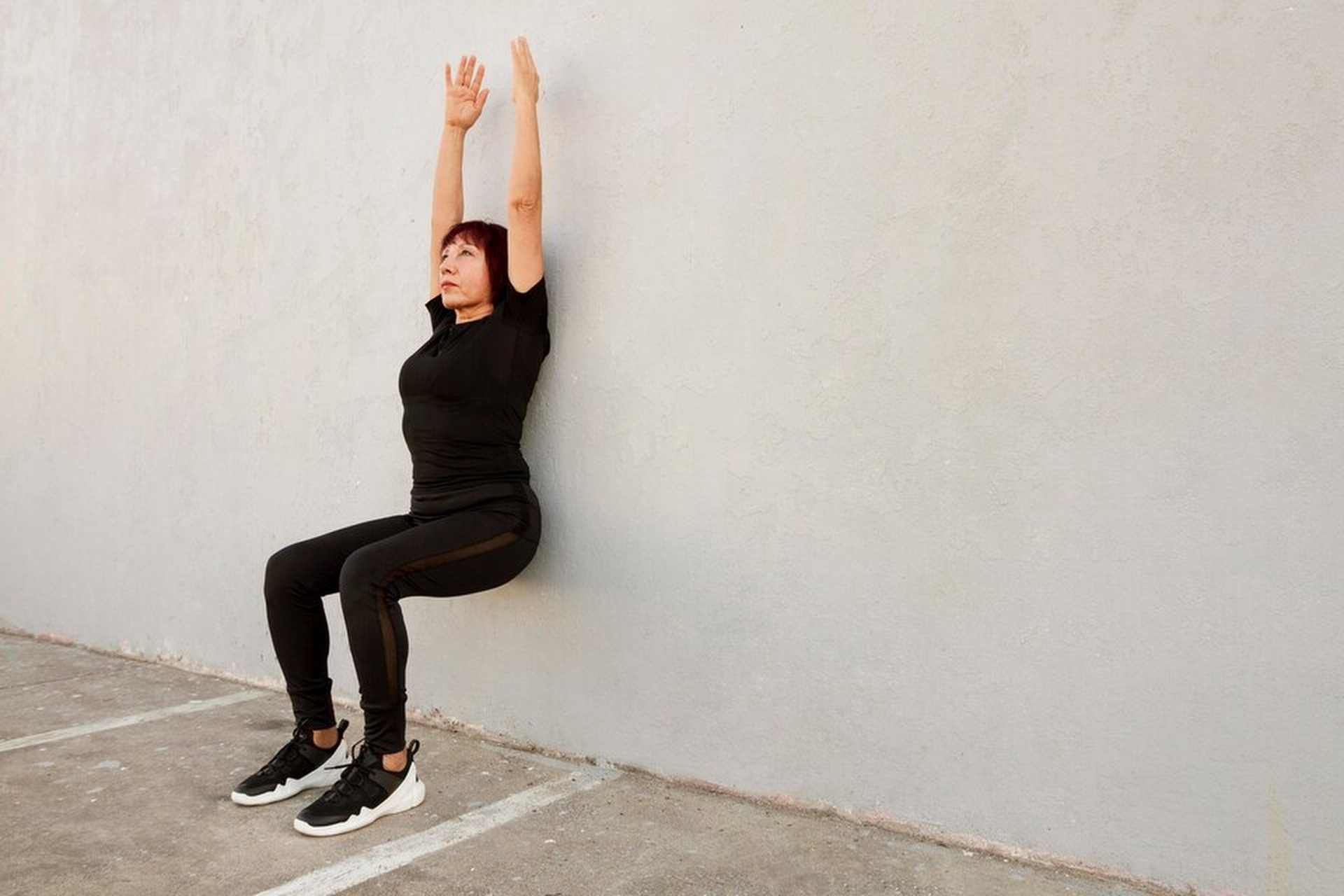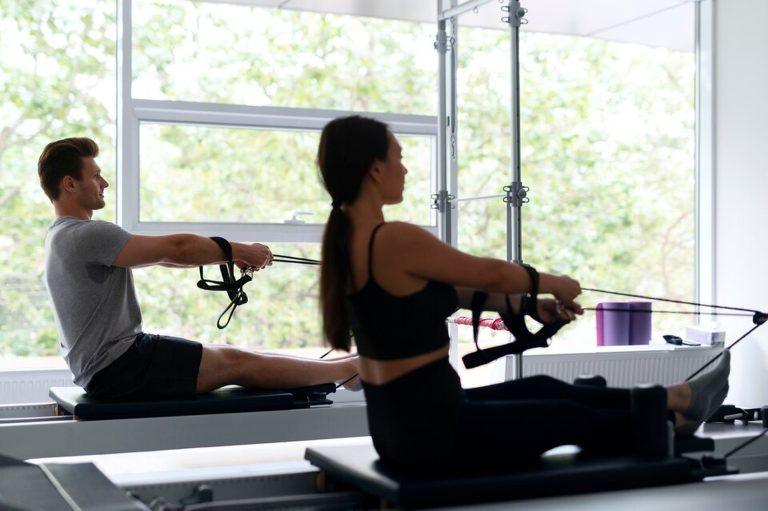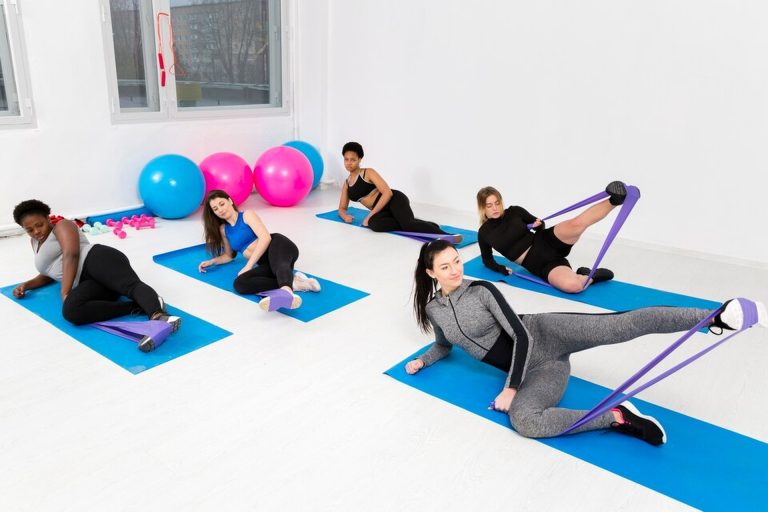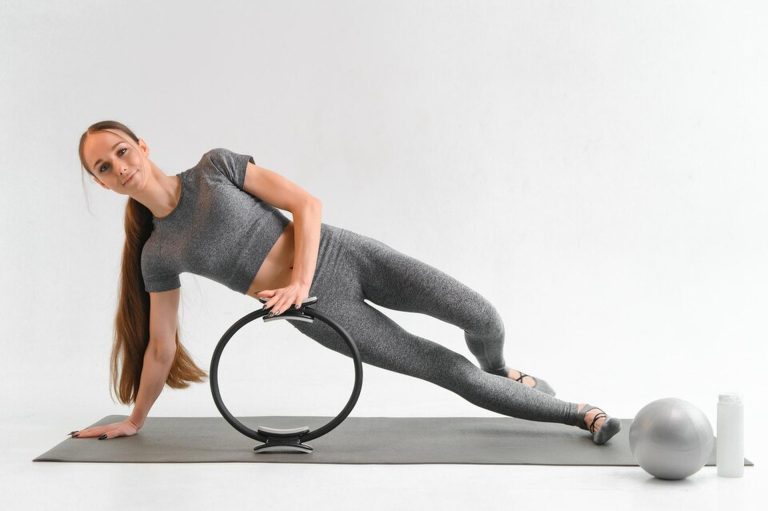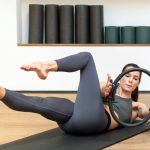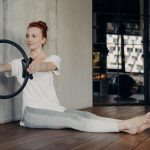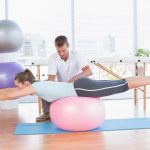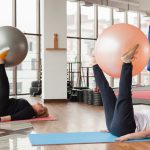Pilates is a very nice exercise to make your core very strong and your body more balanced. It is a slow kind of exercise, so the body does not get pain fast. There is a type of Pilates where you use a wall to help you do it better. This is called Wall Pilates, it is super helpful for new beginners. Wall pilates is good because it does not put pressure on the knees, so anyone can try it.
Stability is important because it helps your body to stand straight and avoid getting hurt or injured. Also, it helps you to move better and not fall when walking or running. In this blog, you will read some good benefits of this type of pilates and how to do easy and useful exercises with wall support to get strong balance and core strength.
What Is Wall Pilates And How Does It Enhance Stability
Definition And Key Principles
Wall Pilates is a modern type of Pilates where you do moves while standing or lying next to the wall. The aim of this is to keep your body aligned and steady and steady. The big important things in Pilates are to stay in good posture. Also, to use your core muscles properly and move slowly but strongly. These make you more in control of your body when you practice.
It is also very useful because the way the wall gives you limitations helps you learn better form and movement. With the wall, you can feel when your back is straight or not. This helps you know how to fix it.
How The Wall Provides Functional Support
Wall gives you something very solid to lean on or push so you get good feedback. When you move and touch the wall, you can feel if you’re doing it correctly or not. The wall also makes resistance, so you need more energy, and your muscles work more.
Using the wall, you activate tiny and deep muscles in the body that you may normally not feel. It helps your body to understand the correct position due to body sense called proprioception. This makes the body smarter in the movement idea.
Why Wall Pilates Is Ideal For Stability Training
When people are new to exercise, they do not have a strong balance. The wall helps you to stay where you should be, so you do not fall. Also, it lets you practice slowly and with focus.
Wall pilates is the best method to learn balance slowly, then you can remove the support later and try freestanding pilates forms. It builds confidence muscles and mind together.
Top Benefits Of Wall Pilates For Core And Balance
- Improves postural alignment and reduces compensation patterns: Doing wall pilates teaches your body the correct position. You do not use the wrong muscles to hold a pose, so posture improves.
- Builds deep core strength with enhanced body awareness: You will start to feel tiny muscles in your stomach working. You know more about how the body moves and feels.
- Supports spinal health through low-impact movement: All exercises are slow and smooth. They do not hurt the spine or cause pressure, but improve spine movement.
- Enhances flexibility and joint mobility: Wall pilates stretches the joint softly. There is more space for the muscles to move and less tightness comes.
- Reinforces balance and coordination in a controlled environment: You only move as much as the wall says, so you learn better coordination. This gives you a feeling of a more steady body.
These benefits all come slowly if you do wall pilates regularly. The more your core becomes strong, the better your full body moves in one full line. Especially beginners and older people who feel braver moving daily. The wall makes learning safer and less scary.
Foundational Wall Pilates Moves For Beginners
Wall Roll Down
This move lets your back move bone by bone slowly like a string of pearls. It also makes the hamstring muscles long and loose. You will stand at the wall and roll down like you want to touch your toes.
Wall Squat With Arm Raise
Here you slide down the wall in the squat and then raise both arms. This makes your tummy tighten and also think about arms movement with legs. You must keep balance and not fall front so your core works more.
Standing Leg Slides
This move is easy-looking, but it needs high focus. You stand straight and one leg slides on the floor while you do not bend the other. Your hips should not move. This makes your one-sided body do more work.
Wall Angels
You stand tall with your whole back against the wall and raise your arms like flapping wings. It teaches the scapula to move in the right path. It is very good for shoulder posture and chest opening.
Supported Bridge With Feet On Wall
You lie down and place your feet on the wall, and then lift your hips. This brings good attention to the glutes and core, using the wall as help. It keeps your feet steady so you feel more secure while lifting.
Deep Core Activation With Wall Support
How To Use The Wall To Engage The Transverse Abdominis
Lie on your back, press your lower back to the wall, and pull in your belly soft. You are not sucking, just slowly tightening. This brings the deepest core muscle to work that protects the spine area tightly.
Breathing Techniques For Core Engagement
Breathe from the sides of the ribs and not from the belly up. Breathe slowly but make your ribs expand outside as you breathe. Your core will stay on, and your rib will not pop up.
Progressions For Increased Challenge
When you are better, you can use the sliders under your feet or the band to push. That needs more strength without losing form. You will move slower and with more control as exercise becomes more advanced.
Best Advanced Wall Pilates Stability Exercises
- Wall-Assisted Teaser Prep: You sit with your back toward the wall and slowly lift your legs. The wall gives you back support while your core holds shape.
- Wall Plank with Leg Lift: Hands on the wall in plank style and raise one leg. This teaches the pelvis to stay level while other parts move.
- Single-Leg Wall Bridge with March: One leg on the wall and do a bridge. Lift the other leg slowly. Only strong glutes and the core can do this perfectly.
- Wall Push-Up with Core Scoop: Do push-ups standing facing the wall. As you push away, pull your belly button toward you. Work arms and core at the same time.
- Standing Wall Roll-Outs (using a stability ball or towel): Push the ball up on the wall while standing and then pull back. This move makes you control the upper and lower body together using a ball.
- Wall-Supported Side-Lying Leg Series: Lay one side against the wall and do leg moves. Make the body not twist, so you isolate the leg muscles nicely.
- Wall Pike Tuck with Gliders: Start in plank with feet on gliders. Pull feet to chest, making a pike shape. Walls, keep your pose good, so focus more on your core.
These exercises are very hard and require a lot of strength. But also, they are better for improving balance than simple exercises. They teach holding form without losing posture while more parts of the body are engaged.
Common Mistakes And How To Fix Them
Overarching Or Flattening The Lower Back
Many people bend their lower back too much or make it flat against the wall. Use the wall to feel the curve and try to keep the natural shape, not force back down or out. Neutral spine protects both the core and the spine.
Rushing Through Movements
Some try to finish fast, but pilates is about moving slowly. Fast move, lose form, and the brain forgets to focus. You must go slow to stay safe and train your body and brain better.
Inconsistent Core Engagement
Some people leave their core loose when changing poses. But the core must stay active every time. Think like pulling pants up slowly and keep it that way.
Misaligned Head And Neck Position
Look straight, but some people bend their necks up or down. The head should touch the wall in line with the upper back. If not, fix it and feel long from tail to top.
All these mistakes can stop your progress. You will not get strong if you keep making errors. Set a mirror or use the phone to video and check your movements regularly to fix your posture.
Structuring A Wall Pilates Routine For Stability Gains
Recommended Frequency And Duration
Start the week with three or four sessions of pilates and do for twenty to thirty minutes. The body needs to practice regularly to learn better. With time, you can do more or harder versions when ready.
Balancing Wall Pilates With Other Modalities
Only doing one thing is not best so add stretching or some weight training. You can use bands for arms or walking for legs. This makes the full body healthy, not just the core.
Sample Weekly Routine
Monday, try standing wall moves for balance. Wednesday do lying ones for glutes. Friday, combine both with breathing focus. Repeat the same or adjust as the body’s level improves.
Conclusion
Wall Pilates is special because it helps your body to get balanced, strong, and more aware. If you are new or want more control walls can help you learn safe and good posture. Start with easy moves and then do harder ones after some time as you feel stronger. Keep doing it with focus and time, and your balance will become very steady. The wall is not just a support but also like a teacher, always telling your body what is a good movement.

